Published James Diekmann on September 27, 2017
Traveling is fun when it’s for vacation. Traveling for work can be tiring, but is also very rewarding. Since I started working at VUV in 2014, I’ve been quite the world traveler. I’ve been to Asia and across Europe and the Middle East. But who am I kidding, the real-world traveler is our nearest and dearest VGA-100, the fuel analysis vacuum ultraviolet spectrometer.
This detector has been all over the map! Well over 20 distinct locations (Figure 1), slowly dotting it’s away across each major country, leaving a pleasant and lasting impression.
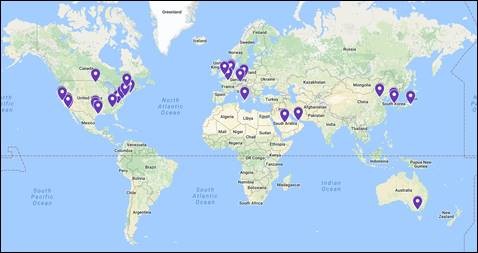
Figure 1. This map highlights numerous locations where the VGA-100 has established residency.
Earlier this year, VUV Analytics saw the publication of the first ASTM International method for gas chromatography – vacuum ultraviolet absorption spectroscopy detection. ASTM D8071 – 17 focuses on a mass and volume percent breakdown of class and carbon number analysis for gasoline-range fuels. Specifically, the method reports Paraffins, Isoparaffins, Olefins, Naphthenes and Aromatics (PIONA), select hydrocarbons like benzene, plus oxygenates like ethanol. For more information about the method, check out this link: https://www.astm.org/Standards/D8071.htm.
Since the publication of ASTM D8071, my colleagues and I have had the opportunity to display our technology across the globe and highlight our strengths with gasoline-range fuels analysis. What’s that you ask? How innovative is VUV for fuels analysis? Well let me tell you! It so happens that there are spectral characteristics that are common to compound classes, spectral fingerprints that are intrinsic properties for GC-compatible molecules (Figure 2).
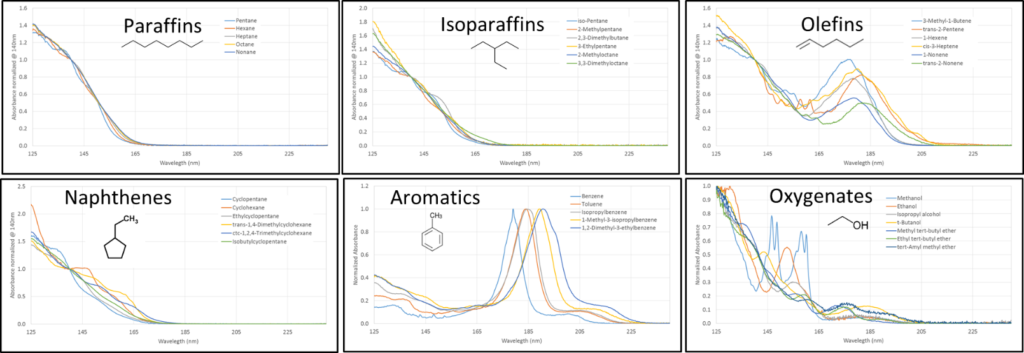
Figure 2. VUV absorbance spectra allow class characterization for paraffins, isoparaffins, olefins, naphthenes, aromatics, and oxygenates.
Now, I’ll spare everyone the details of how this exactly works (unless you want to shoot me an e-mail and then I will expound on it in detail!). Essentially a molecule’s far-UV spectrum is robust, repeatable, and reliable due to the nature of first principle detection and quantum mechanics. This allows for an effortless qualitative and quantitative characterization of gasoline-range fuel streams, including spectral deconvolution for complex samples.
It’ll only be a matter of time before we have a VUV detector (or more) in each nation that processes finished gasoline and other gasoline-range blending streams! And that means more frequent world traveling for me.


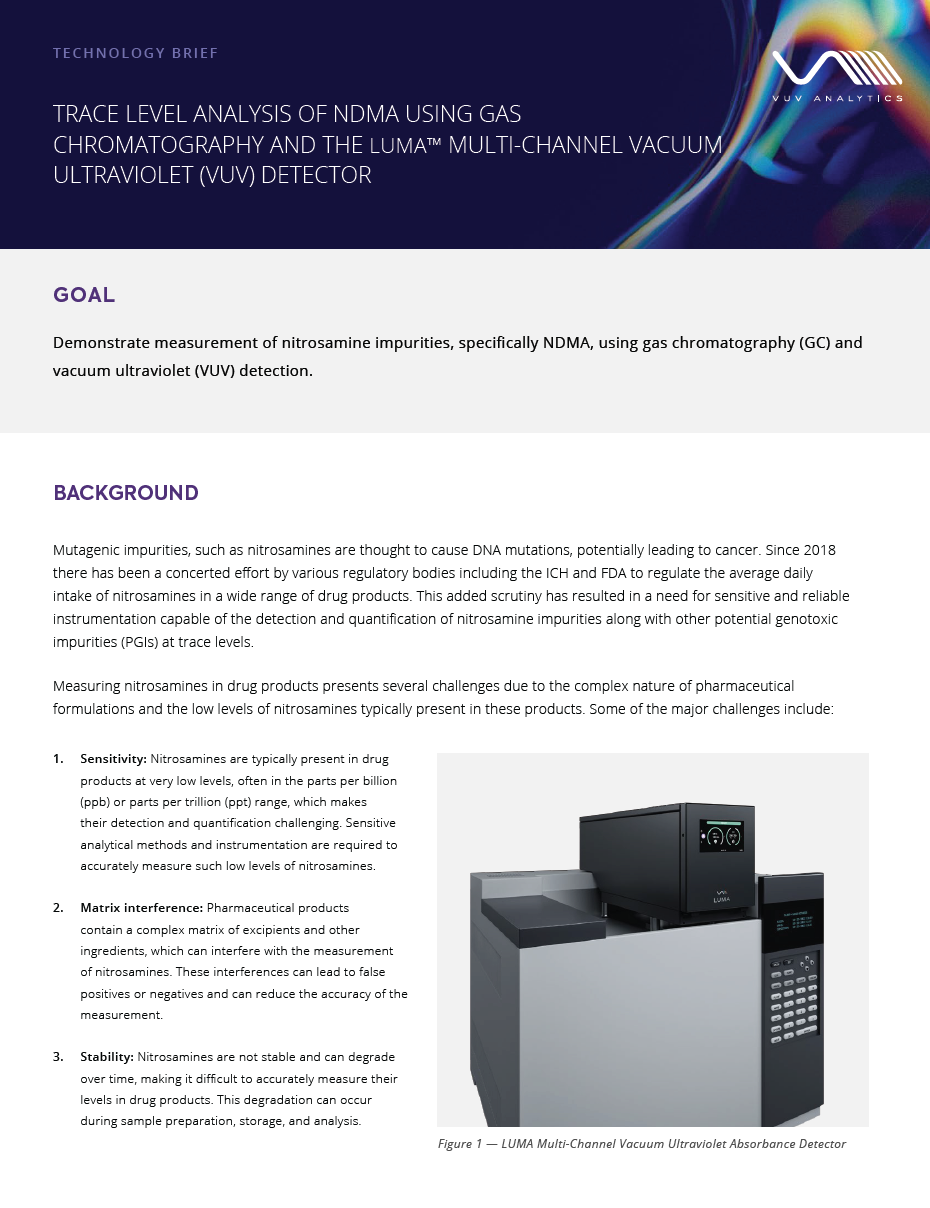
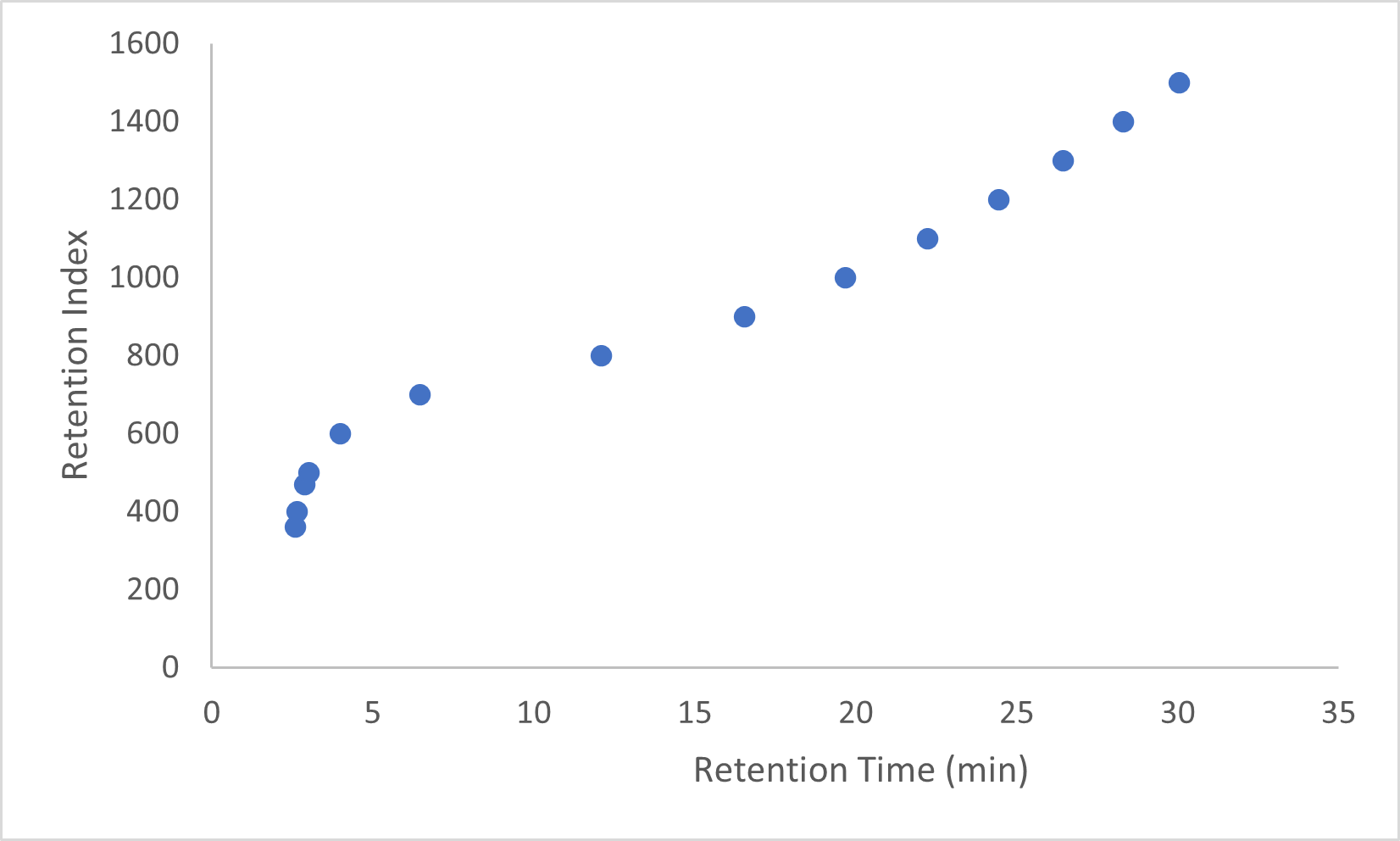
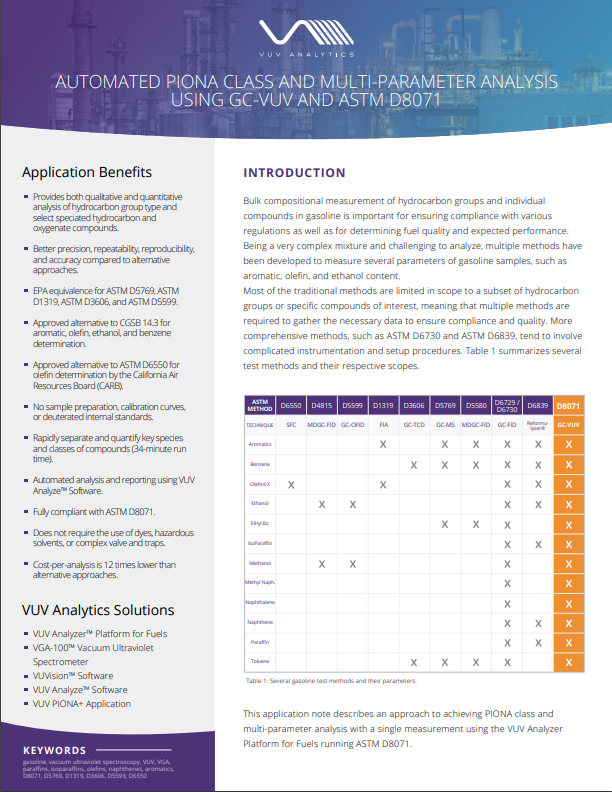





I am interested in knowing any work done for correlating properties of gasoline, particularly octane.
Octane correlation from D8071 data has not been rigorously assessed, but is under consideration for D8071 and/or DHA-VUV method enhancement